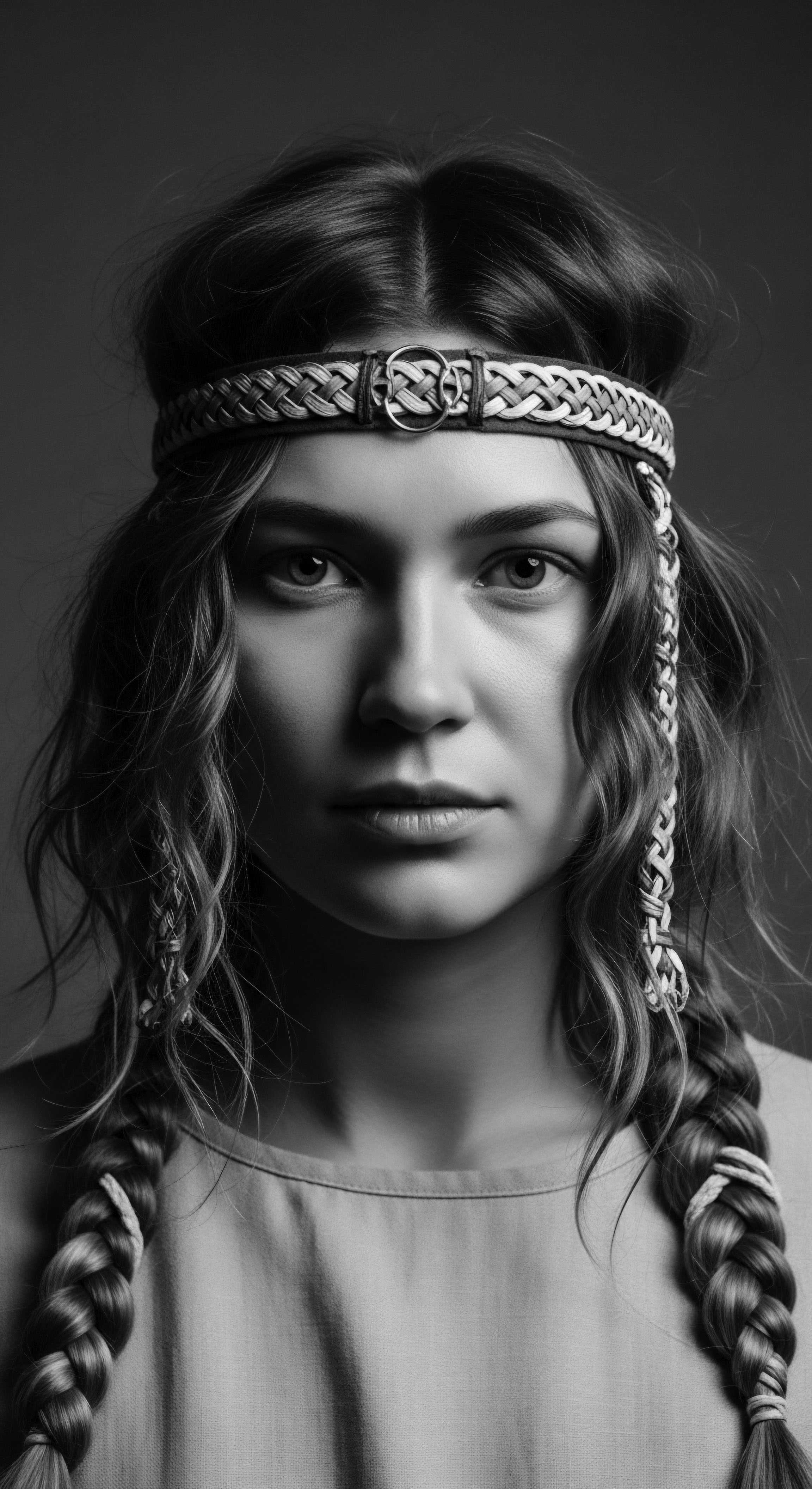
Roots
In the quiet of evening, as the day’s light softens and shadows lengthen, a whispered wisdom often settles upon the shoulders of those whose hair coils with the memory of ages. For generations, across continents and through the shifting tides of time, a simple gesture has preserved the vibrant spirit of textured hair ❉ the nightly covering. This practice, seemingly small, holds within its folds a profound story of resilience, ingenuity, and a deep, intuitive understanding of hair’s very being. We gather here, at the source, to uncover how these traditional sleep coverings, passed down through the hands of ancestors, maintain the essential moisture of textured hair, honoring a heritage that flows as freely as a wellspring.
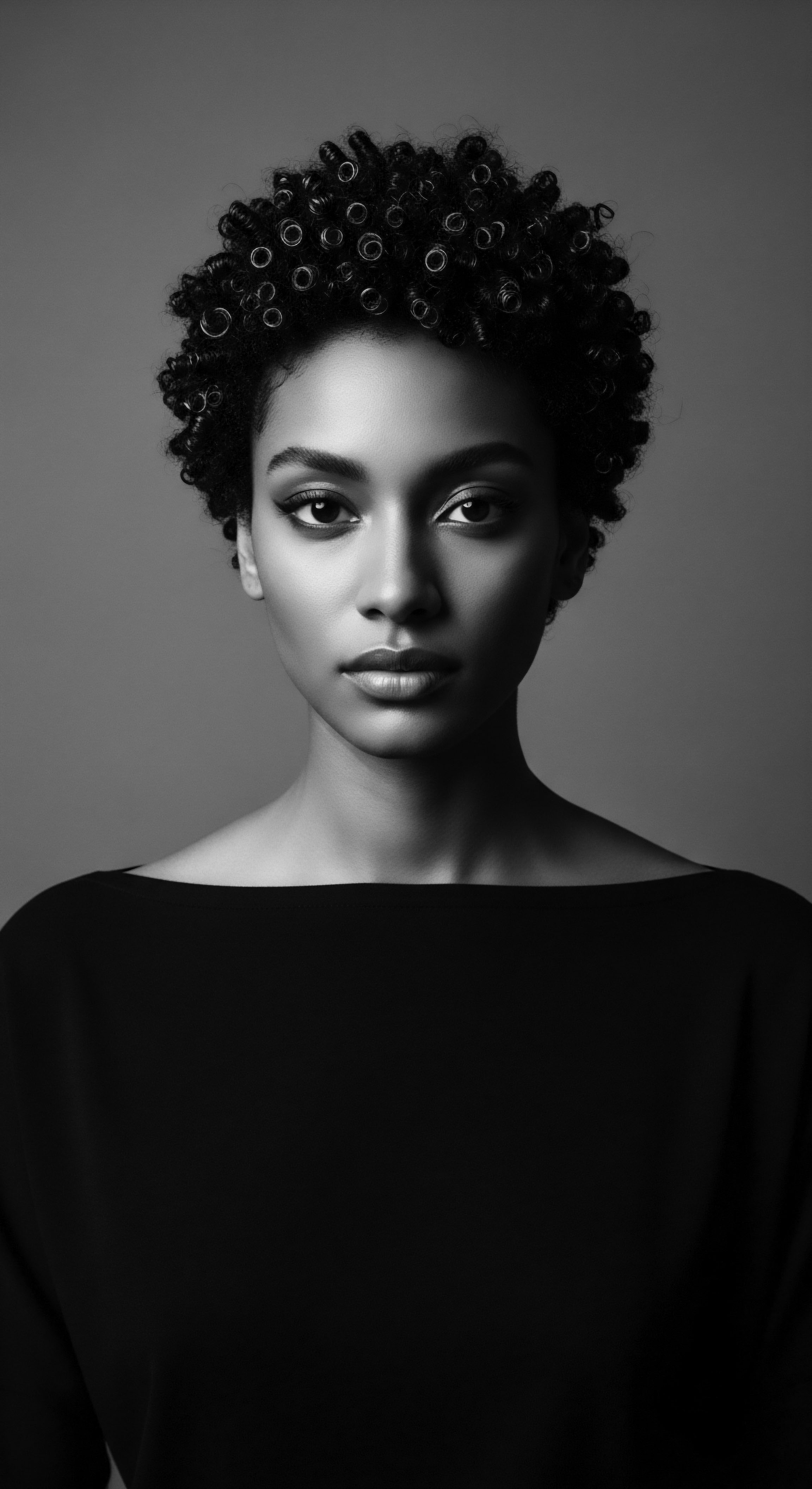
The Architecture of Ancestral Strands
The unique geometry of textured hair, with its elliptical cross-section and characteristic curl patterns, renders it distinct from straighter forms. Each strand, in its spiraling descent from the scalp, presents a unique set of challenges and gifts. The cuticle, the outermost protective layer, does not lie as flat as it might on a straight strand. This inherent lift, while allowing for magnificent volume and captivating definitions, also creates more surface area exposed to the environment.
Moisture, the very breath of a healthy strand, finds more pathways for escape into the ambient air. It is this fundamental biological truth, understood long before microscopes revealed its microscopic details, that ancestral practices sought to address. The wisdom of these practices reflects a deep observational knowledge of hair’s natural inclinations.
Traditional sleep coverings are a heritage-rooted response to the inherent moisture vulnerability of textured hair.
Hair’s composition, primarily keratin protein, relies on hydrogen bonds for its elasticity and moisture properties, readily exchanging water with the surroundings. The natural lipids that coat the hair, including 18-methyl eicosanoic acid (18-MEA) on the cuticle’s surface, provide a hydrophobic, conditioning layer. However, for textured hair, particularly those with tighter curl patterns, this natural sebum from the scalp struggles to travel down the entire length of the strand. This journey is hindered by the very coils that lend the hair its distinctive beauty, making the ends especially prone to dryness.
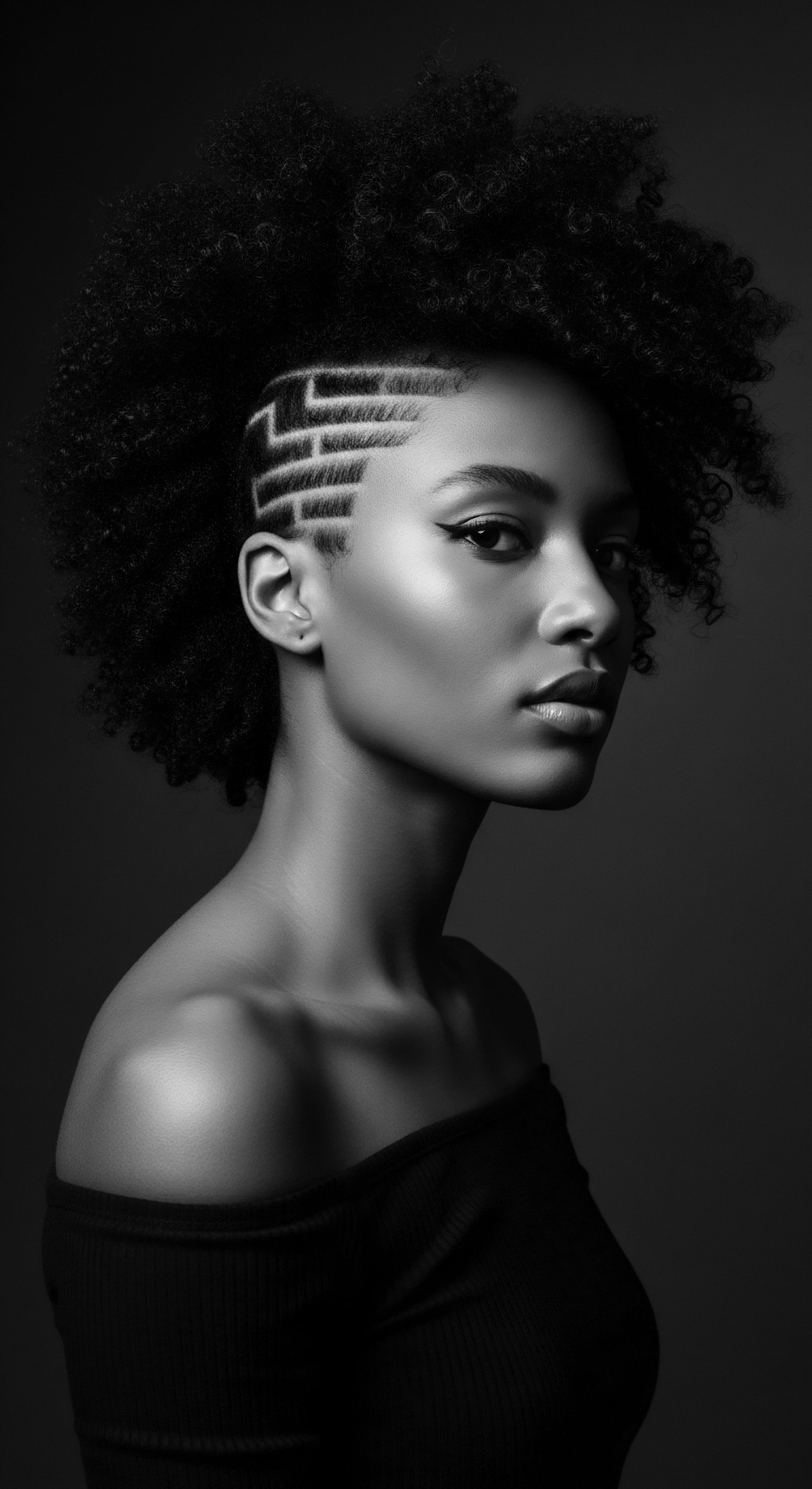
Echoes from the Source ❉ Hair’s Earliest Protectors
The practice of covering hair at night is not a modern innovation but an enduring tradition with roots deeply embedded in various cultures, including those across Africa and its diaspora. Long before the widespread availability of commercially manufactured hair products, communities relied on natural materials and learned wisdom to care for their crowning glory. These early coverings were not simply for modesty or decoration; they served a vital, practical purpose. They shielded hair from environmental aggressors and helped to preserve the meticulous styles that often conveyed social status, marital standing, or tribal affiliation.
The recognition that hair, especially when left exposed to rough surfaces or dry air overnight, would suffer damage and moisture loss, prompted the ingenious use of various materials. These materials were chosen for their inherent smoothness and their ability to create a protective barrier. While historical records detailing specific nighttime coverings for moisture retention can be sparse, the widespread use of headwraps and coverings for daily protection strongly implies their nighttime application. The understanding of hair’s fragility and the need for its preservation runs deep in ancestral hair care philosophies.
| Traditional Material Fine Cotton or Linen (selected weaves) |
| Understood Property and Heritage Link While absorbent, tightly woven, smooth variations provided a gentler buffer than coarse alternatives, a practical choice when luxurious fabrics were unavailable. |
| Traditional Material Plant Fibers (specific smooth leaves or processed barks) |
| Understood Property and Heritage Link Used in certain regions, often for specific styles or as temporary wraps, showcasing a deep connection to local botanical knowledge. |
| Traditional Material Animal Skins (soft, processed hides) |
| Understood Property and Heritage Link Less common for direct hair contact but sometimes used for outer layers of elaborate coverings, offering insulation and protection in varied climates. |
| Traditional Material These early choices highlight resourcefulness and an intuitive grasp of how material interactions affect hair health. |

Ritual
The transition from day to night for textured hair has long been a sacred ritual, a time for gentle preservation and thoughtful care. It is within this nighttime sanctuary that traditional sleep coverings truly shine, acting as silent guardians of the hair’s delicate moisture balance. The understanding of how these coverings work, and why their material composition matters so profoundly, bridges the wisdom of generations with the precision of contemporary science. It is a testament to the enduring power of ancestral practices, many of which are now validated by our current grasp of hair biomechanics.
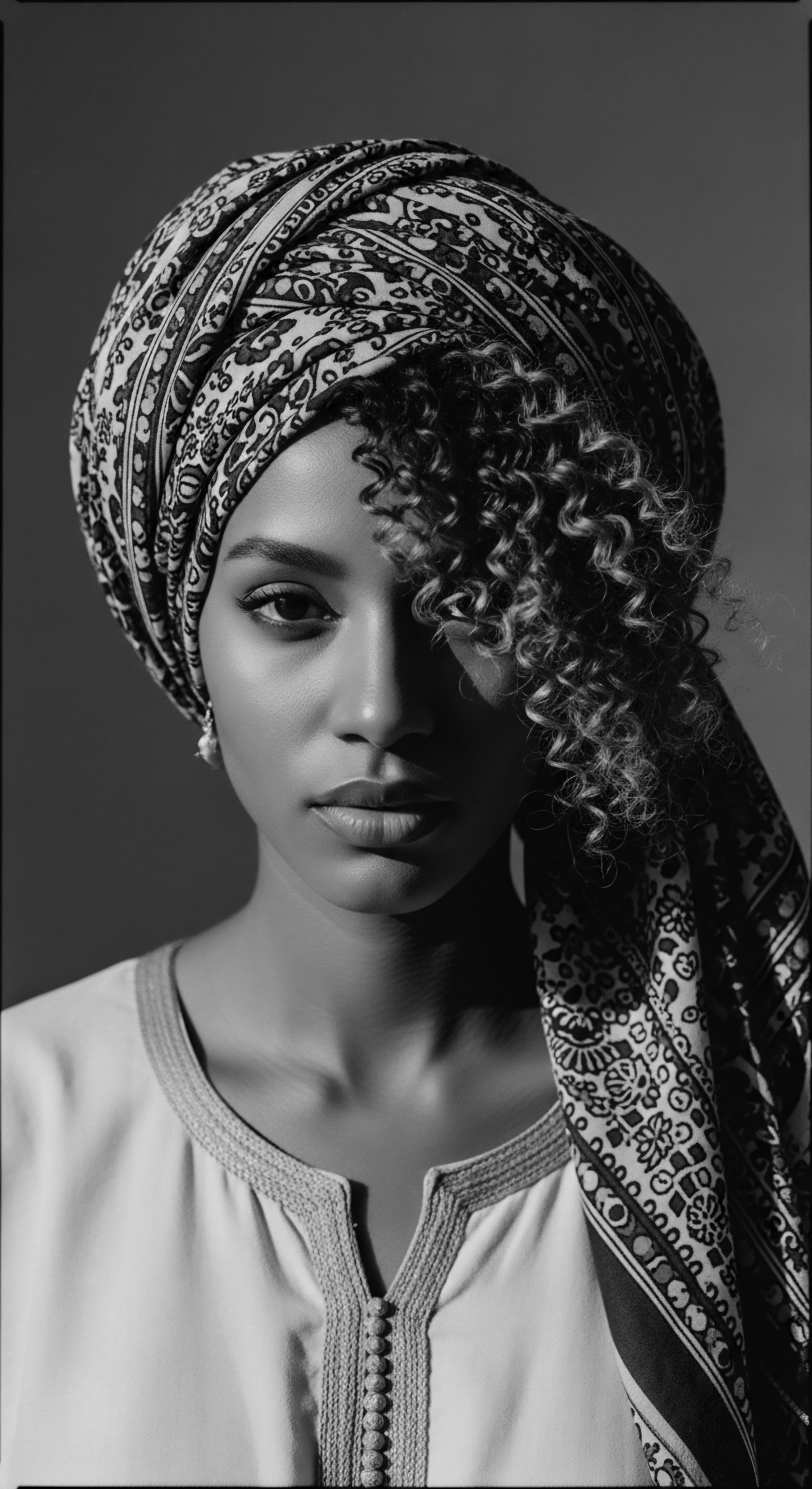
The Nighttime Gauntlet ❉ Why Protection Is Essential
As we sleep, our bodies move, and our hair encounters the surfaces of pillows and bedding. For textured hair, especially, this nocturnal interaction can strip essential moisture and disrupt intricate curl patterns. Cotton, a common bedding material, is highly absorbent.
Its fibers, with their natural roughness, create friction against the hair’s cuticle layer. This constant rubbing can lift the cuticle scales, leading to ❉
- Moisture Loss ❉ Cotton acts as a wick, drawing hydration directly from the hair strands.
- Frizz ❉ Raised cuticles are more susceptible to environmental humidity, causing the hair to swell unevenly and become frizzy.
- Breakage ❉ The friction weakens the hair shaft, making it more prone to tangles, knots, and ultimately, mechanical damage and breakage.
This is where the wisdom of traditional sleep coverings becomes evident. They serve as a protective barrier, a smooth intercession between hair and potentially damaging surfaces.
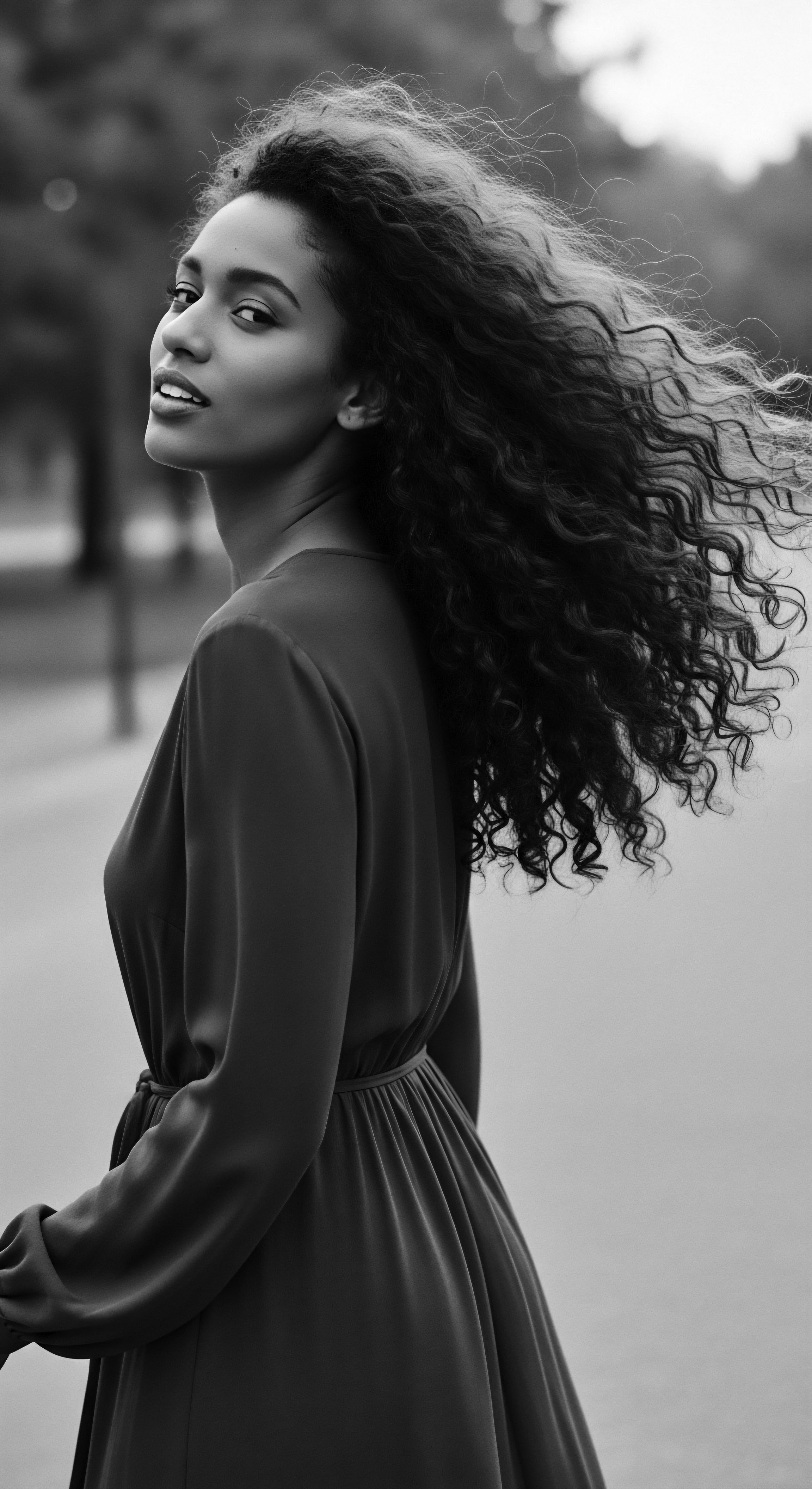
How Do Traditional Sleep Coverings Maintain Textured Hair Moisture?
The efficacy of traditional sleep coverings in maintaining textured hair moisture lies primarily in two interconnected mechanisms ❉ reduced friction and altered microclimate. These principles were intuitively grasped through observation and practice long before their scientific underpinnings were articulated.

How Do Materials Influence Hair Hydration?
Materials like Silk and Satin stand as cornerstones of effective hair protection due to their inherent qualities. Silk, a natural protein fiber, and satin, a weave known for its smooth surface, both possess a low coefficient of friction. This means hair glides over them with minimal resistance. When hair experiences less friction, its cuticle layer remains smooth and flat.
A smooth cuticle is a tightly sealed cuticle, which significantly reduces the rate at which moisture evaporates from the hair shaft. This preservation of the cuticle’s integrity is paramount for retaining the hair’s natural oils and applied moisturizers.
Additionally, these materials are less absorbent than cotton. Unlike cotton pillowcases that can pull moisture from your strands, silk and satin allow the hair to retain its hydration throughout the night. This is especially important for textured hair, which is naturally more prone to dryness because sebum, the scalp’s natural oil, does not travel down the coiled strands as easily as it does on straight hair.
| Material Type Silk |
| Key Properties for Hair Smooth surface, natural protein fiber, low absorbency. |
| Impact on Moisture Retention and Heritage Link Reduces friction, preventing cuticle damage and moisture loss. Historically a luxury item, adapted for hair care by various elites, and later reclaimed for textured hair traditions. |
| Material Type Satin |
| Key Properties for Hair Smooth weave (often polyester or rayon), low absorbency, more accessible than silk. |
| Impact on Moisture Retention and Heritage Link Mimics silk’s friction-reducing and moisture-retaining benefits. Became a practical, widely available alternative, democratizing effective nighttime hair care within Black communities. |
| Material Type Cotton (Standard) |
| Key Properties for Hair Rough surface, highly absorbent. |
| Impact on Moisture Retention and Heritage Link Increases friction, strips moisture, and leads to frizz and breakage. Its common use highlights the historical ingenuity of those who sought alternatives. |
| Material Type The choice of covering material directly influences hair's health, a lesson passed down through generations of textured hair care. |
The enclosure created by a bonnet or headwrap also plays a role in creating a humid microclimate around the hair. This enclosed space traps the natural moisture emanating from the scalp and hair, creating a barrier against dry ambient air. This humid environment minimizes the hygroscopic effects of dry air, where hair would otherwise lose water to its surroundings. It helps in stabilizing the hydrogen bonds within the hair’s keratin structure, maintaining its elasticity and preventing brittleness.
The smooth, non-absorbent properties of favored covering materials reduce friction and create a protective microclimate around textured hair.
This knowledge, while not always articulated in scientific terms by ancestors, was evident in the consistent results ❉ protected hair that remained softer, more defined, and less prone to breakage. The continued use of these coverings, despite changing hair trends and societal pressures, stands as a testament to their undeniable efficacy and deep cultural grounding.
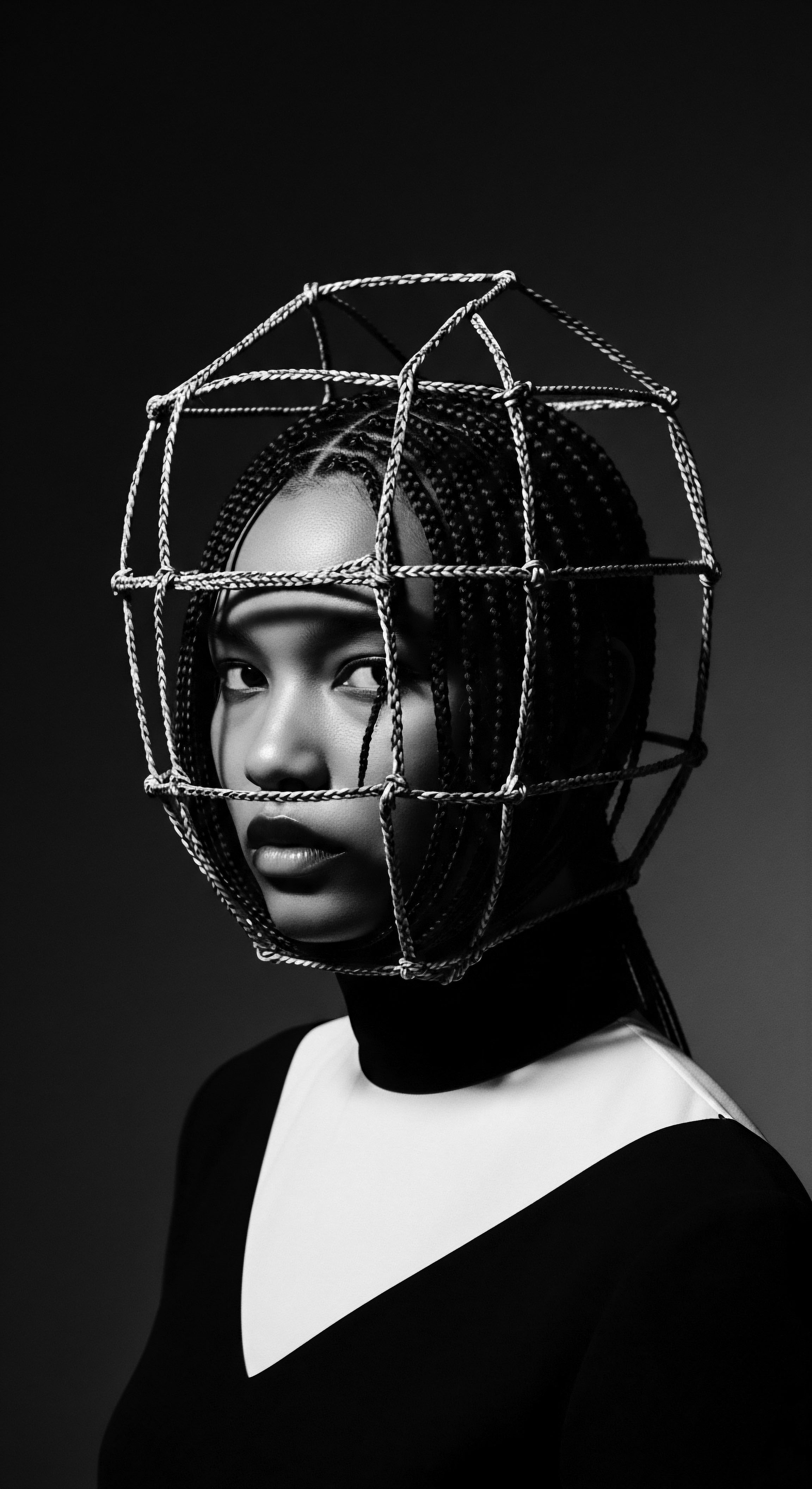
Relay
The journey of traditional sleep coverings, from their ancient origins to their contemporary affirmation, is a powerful relay race of knowledge passed through the hands of time. It speaks to the deep cultural intelligence inherent in Black and mixed-race communities, a wisdom that often predated and at times even paralleled scientific discoveries. This enduring legacy demonstrates how practical solutions, born of necessity and observation, have served as the foundation for modern hair care principles, particularly for textured hair. This heritage is not a static artifact; it is a living tradition, continuously adapting while holding true to its core protective purpose.

A Legacy of Resilience ❉ Historical Applications
The practice of covering hair, whether for daily wear or nightly protection, holds a complex and deeply rooted history within African and diasporic communities. In many parts of Africa, elaborate hairstyles conveyed social narratives, indicating wealth, age, marital status, or even tribal affiliation. Preserving these intricate styles was paramount, making protective coverings essential. For instance, in West African cultures, traditional headwraps like the Nigerian Gele or Ghanaian Duku were worn for ceremonial occasions and often crafted from silk, reflecting both cultural heritage and status.
However, the narrative of head coverings took on a painful, yet ultimately defiant, dimension during the transatlantic slave trade and its aftermath. Enslaved African women were often compelled to cover their hair, a measure intended to strip them of their cultural identity and beauty. Laws were even enacted in some regions, such as the 1786 Tignon Law in Louisiana, which mandated that free Black women cover their hair in public as a marker of their perceived inferior status.
Yet, in an astonishing act of resistance and reclamation, these women transformed the symbols of oppression into statements of enduring beauty and defiance. They adorned their mandatory head coverings with vibrant fabrics, intricate ties, and even jewels, turning them into expressions of cultural pride and individual artistry.
Traditional head coverings for textured hair evolved from ancient practices of preservation to symbols of defiance and cultural pride during times of oppression.
This historical context is crucial for understanding the enduring significance of bonnets and headwraps today. They were, and remain, tools for practical hair preservation, helping to retain moisture and style (Byrd & Tharps, 2001, p. 75). But they also carry the weight and beauty of a heritage defined by strength and self-determination.
The knowledge that cotton bedding would absorb precious moisture, making hair dry and susceptible to breakage, was a lived reality for enslaved individuals performing physically demanding work. Head coverings, whether simple cloths or later, more structured bonnets, offered a tangible solution, protecting strands from the harsh elements and preserving some semblance of order and health amidst unimaginable adversity.

Connecting Ancestral Wisdom with Modern Understanding
The scientific understanding of hair, particularly textured hair, has advanced significantly, yet it often serves to corroborate the efficacy of ancestral practices. Research on hair porosity, for instance, highlights that textured hair, due to its unique cuticle structure, is often more porous and therefore more susceptible to moisture loss. The cuticle scales, which are fewer in number and tend to be lifted more in African hair compared to Asian or Caucasian hair, contribute to this vulnerability. This inherent structural reality underscores the genius behind the selection of smooth, low-friction materials for nighttime protection.
Modern studies confirm that materials like silk and satin minimize friction, thereby reducing cuticle damage and preventing the escape of hydration that occurs with rougher fabrics like cotton. This direct correlation between fabric type and hair health provides a scientific explanation for what generations implicitly understood. The deliberate creation of a contained environment around the hair, as achieved with a bonnet, also limits exposure to dry air, further contributing to moisture retention by reducing the rate of water evaporation from the hair shaft.
The practical application of these principles extends to the modern realm of hair care. When hair is protected by a smooth covering, the need for extensive restyling in the morning diminishes, reducing manipulation and further minimizing breakage. This efficiency, a subtle yet profound benefit, directly relates to the concept of low-manipulation hair care, a strategy known to promote hair health and length retention in textured hair.
The historical journey of sleep coverings reflects an ongoing conversation between hair and its caretakers across time. It is a dialogue rooted in ancestral practices, deepened by lived experiences, and now, illuminated by scientific inquiry. The bonnet, or headwrap, as a nightly companion for textured hair, is therefore more than an accessory; it is a profound cultural artifact, a symbol of care, identity, and enduring heritage.
- Tignon Law ❉ A legal mandate in 18th-century Louisiana requiring free Black women to wear head coverings, intended to mark their social status.
- Gele and Duku ❉ Traditional West African headwraps, often made of silk, signifying cultural identity and used for special occasions.
- Madam C.J. Walker ❉ A pioneering Black entrepreneur whose work in the early 20th century focused on products for Black hair, further establishing the bonnet as a tool for sustaining and protecting textured hair.

Reflection
The enduring legacy of traditional sleep coverings, those silken cocoons and smooth wraps, transcends mere utility. They are living archives, whispering stories of resilience, ancestral ingenuity, and the deep, abiding connection between Black and mixed-race communities and their hair. In every smooth glide of fabric against a textured coil, there is an echo of hands that cared, of knowledge passed down through the ages, and of a heritage fiercely guarded.
This exploration of how these coverings maintain moisture is more than a study of physics or material science. It is a meditation on the Soul of a Strand, recognizing that each curl and kink carries a lineage, a history of adaptation and beauty. The intuitive wisdom that led ancestors to choose smooth fabrics and protective styles, long before the lexicon of cuticles and porosity existed, speaks to a profound understanding of hair’s needs.
This understanding, born of observation and necessity, was a powerful act of self-care and cultural preservation in the face of adversity. The sleep covering, therefore, stands not only as a barrier against moisture loss but as a testament to the continuous self-affirmation embedded within textured hair traditions.
As we continue to navigate the ever-evolving landscape of hair care, the wisdom embedded in these ancestral practices remains a guiding light. The simple act of donning a bonnet or wrapping one’s hair at night is a daily homage to those who came before, a celebration of heritage, and a practical step towards maintaining the health and radiance of textured hair. It reminds us that sometimes, the most sophisticated solutions are those that have been quietly practiced for centuries, deeply rooted in the soil of tradition and nurtured by the enduring spirit of community.
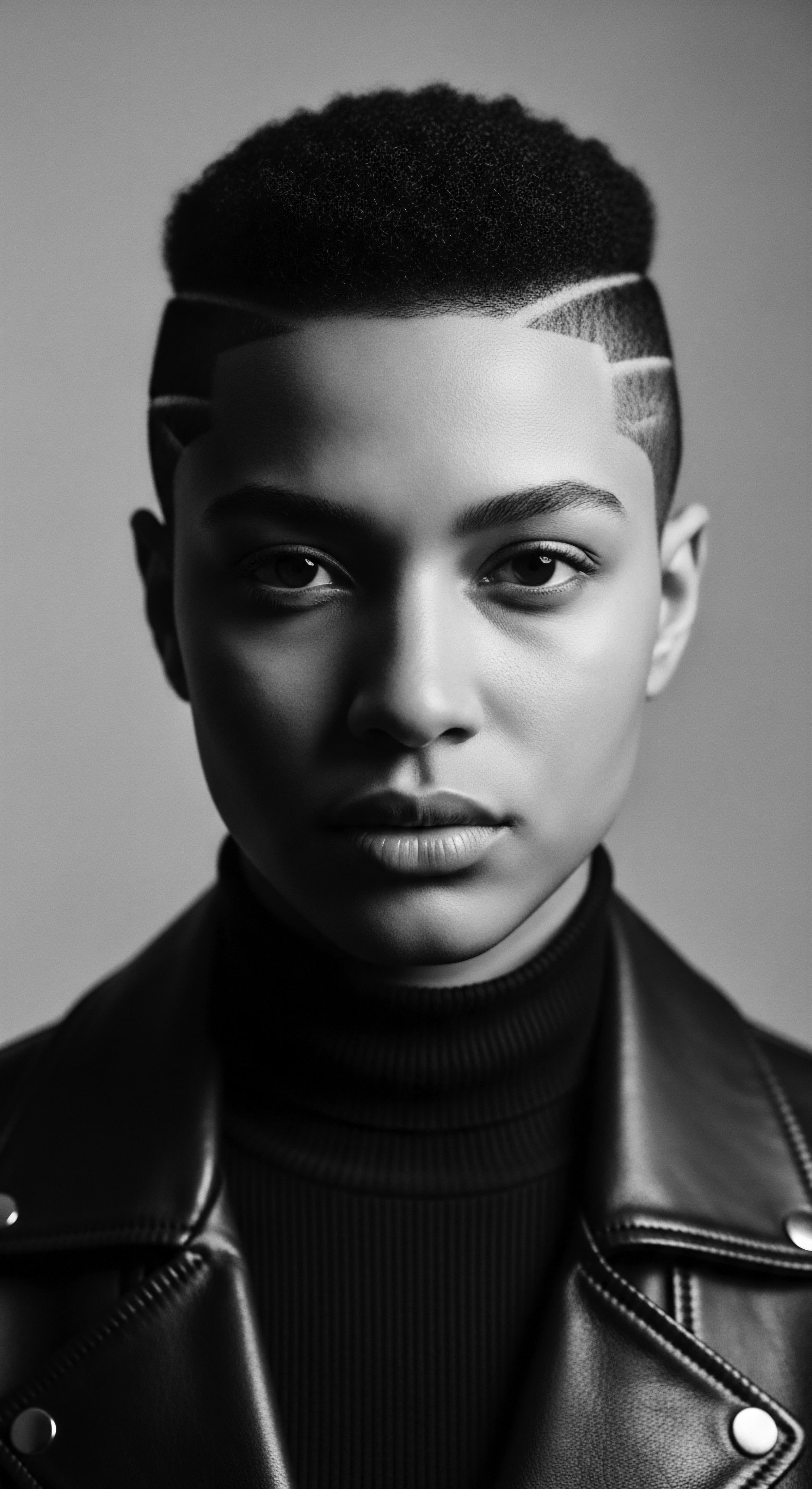
References
- Byrd, A. & Tharps, L. L. (2001). Hair Story ❉ Untangling the Roots of Black Hair in America. St. Martin’s Press.
- Davis-Sivasothy, A. (2011). The Science of Black Hair ❉ A Comprehensive Guide to Textured Hair Care. Sivasothy Publishing.
- Hobs, T. B. (2018). Opulence and Resilience ❉ A Cultural History of Black Hair. The History Press.
- Robbins, C. R. (2002). Chemical and Physical Behaviour of Human Hair. Springer.
- Sano, M. Mayama, H. & Nonomura, Y. (2022). Friction dynamics of human hair treated with water or cationic surfactant aqueous solution. Wear.
- Valentin, J. (2019). The Curly Girl Handbook ❉ The Ultimate Guide to Frizz-Free Curls. Crown.
- Draelos, Z. D. (2011). Hair Cosmetics ❉ An Overview. Indian Journal of Dermatology.
- Porter, C. E. & Smith, P. (2009). The behavior of hair from different countries. Journal of the American Academy of Dermatology.
